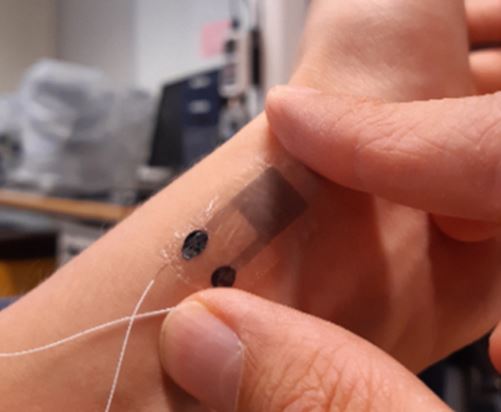Self-powered, highly unobtrusive, low-cost and accurate arterial pulse wave monitoring devices need to be developed to enable cost-efficient monitoring of entire cardiovascular disease risk groups. We report the development of a scalable fabrication process for a highly unobtrusive piezoelectric ultra-thin (t ~ 4,2 µm) e-tattoo arterial pulse wave sensor which utilizes only transparent and biocompatible polymer-based materials. The ferroelectric performance of the ultra-thin P(VDF-TrFE) material layer is optimized through the use of crosslinked PEDOT:PSS electrodes; this results in ~70 % and ~34 % improvements in remanent polarization (Pr) and coercive field (Ec), respectively, when compared to the sensors with pristine PEDOT:PSS electrodes. The ultra-thin form factor enables access to the high bending mode sensitivity of the P(VDF-TrFE) material layer; the maximum sensitivity value achieved in uniaxial and multiaxial bending is ~1700 pC N-1, which is ~50 times higher than the measured normal mode sensitivity. The increased sensitivity is linked to a specific set of direct piezoelectric coefficients using combination of experimental results, statistical analysis and finite element modeling. Finally, the accuracy of the e-tattoo sensor is demonstrated in the non-invasive measurement of radial artery pulse wave by comparing the signal to that obtained with reference device from 7 study subjects.
Self-powered, high sensitivity printed e-tattoo sensor for unobtrusive arterial pulse wave monitoring

Mika-Matti Laurila et al. have published an article about pulse wave sensor
